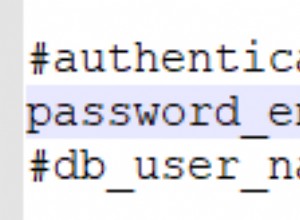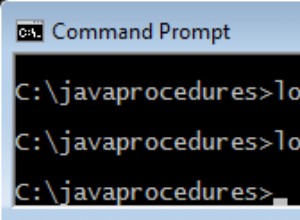Se hai solo una stringa e sai che ha sempre esattamente quattro parti, puoi dividerla in questo modo, usando solo le funzioni di stringa standard (ed evitando le espressioni regolari, che sono più flessibili ma spesso più lente).
NOTA :La seconda metà di questa risposta indirizza le stringhe con un numero variabile di "parti".
with inputs ( str ) as (
select ',,defoifcd,87765' from dual
)
-- end of TEST data; SQL query begins below (use your actual table and column names)
select substr(str, 1, instr(str, ',') - 1) as part_1,
substr(str, instr(str, ',') + 1,
instr(str, ',', 1, 2) - instr(str, ',') - 1) as part_2,
substr(str, instr(str, ',', 1, 2) + 1,
instr(str, ',', 1, 3) - instr(str, ',', 1, 2) - 1) as part_3,
substr(str, instr(str, ',', -1) + 1) as part_4
from inputs;
PART_1 PART_2 PART_3 PART_4
-------- -------- -------- --------
defoifcd 87765
1 row selected.
Se il numero di parti non è noto in anticipo, è meglio ottenere l'output in un formato diverso (vedere l'output di seguito). Se è necessario disporre le parti in colonne che possono essere eseguite dopo che tutte le altre elaborazioni sono state completate, è sempre meglio lasciarle all'applicazione di reporting piuttosto che eseguirle comunque in SQL.
with inputs ( id, str ) as (
select 1, ',,defoifcd,87765' from dual union all
select 2, '' from dual union all
select 3, 'a, b, c' from dual
)
-- end of TEST data; SQL query begins below (use your actual table and column names)
select id, str, level as part_number,
substr(aug_str, instr(aug_str, ',', 1, level) + 1,
instr(aug_str, ',', 1, level + 1) - instr(aug_str, ',', 1, level) - 1) as val
from ( select id, str, ',' || str || ',' as aug_str from inputs)
connect by level <= length(str) - length(translate(str, 'z,', 'z')) + 1
and prior id = id
and prior sys_guid() is not null
;
ID STR PART_NUMBER VAL
-- ---------------- ----------- ----------
1 ,,defoifcd,87765 1
1 ,,defoifcd,87765 2
1 ,,defoifcd,87765 3 defoifcd
1 ,,defoifcd,87765 4 87765
2 1
3 a, b, c 1 a
3 a, b, c 2 b
3 a, b, c 3 c
8 rows selected.




